The AnandTech Coffee Lake Review: Initial Numbers on the Core i7-8700K and Core i5-8400
by Ian Cutress on October 5, 2017 9:00 AM EST- Posted in
- CPUs
- Intel
- Core i5
- Core i7
- Core i3
- 14nm
- Coffee Lake
- 14++
- Hex-Core
- Hyperthreading
Rise of the Tomb Raider
One of the newest games in the gaming benchmark suite is Rise of the Tomb Raider (RoTR), developed by Crystal Dynamics, and the sequel to the popular Tomb Raider which was loved for its automated benchmark mode. But don’t let that fool you: the benchmark mode in RoTR is very much different this time around.
Visually, the previous Tomb Raider pushed realism to the limits with features such as TressFX, and the new RoTR goes one stage further when it comes to graphics fidelity. This leads to an interesting set of requirements in hardware: some sections of the game are typically GPU limited, whereas others with a lot of long-range physics can be CPU limited, depending on how the driver can translate the DirectX 12 workload.
Where the old game had one benchmark scene, the new game has three different scenes with different requirements. These are three scenes designed to be taken from the game, but it has been noted that scenes like 2-Prophet shown in the benchmark can be the most CPU limited elements of that entire level, and the scene shown is only a small portion of that level. Because of this, we report the results for each scene on each graphics card separately.
Graphics options for RoTR are similar to other games in this type, offering some presets or allowing the user to configure texture quality, anisotropic filter levels, shadow quality, soft shadows, occlusion, depth of field, tessellation, reflections, foliage, bloom, and features like PureHair which updates on TressFX in the previous game.
Again, we test at 1920x1080 and 4K using our native 4K displays. At 1080p we run the High preset, while at 4K we use the Medium preset which still takes a sizable hit in frame rate.
It is worth noting that RoTR is a little different to our other benchmarks in that it keeps its graphics settings in the registry rather than a standard ini file, and unlike the previous TR game the benchmark cannot be called from the command-line. Nonetheless we scripted around these issues to automate the benchmark four times and parse the results. From the frame time data, we report the averages, 99th percentiles, and our time under analysis.
All of our benchmark results can also be found in our benchmark engine, Bench.
#1 Geothermal Valley Spine of the Mountain
MSI GTX 1080 Gaming 8G Performance
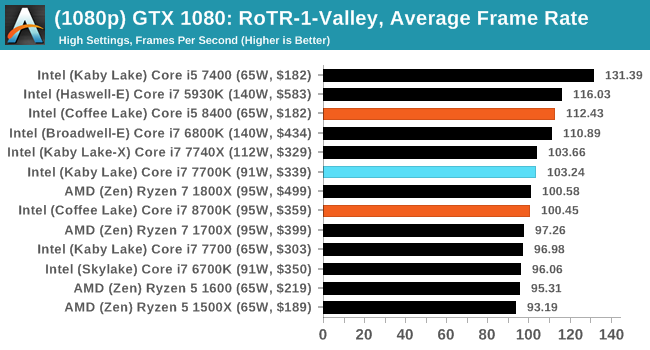
1080p


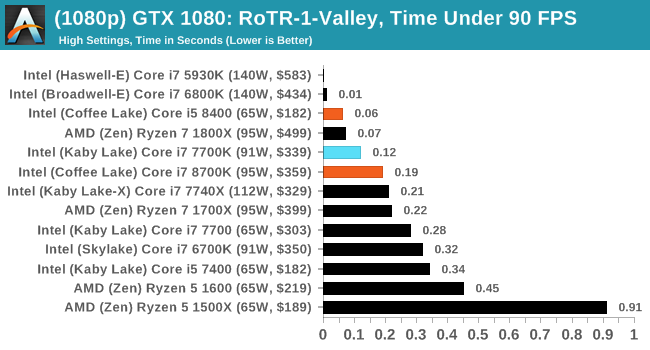
4K
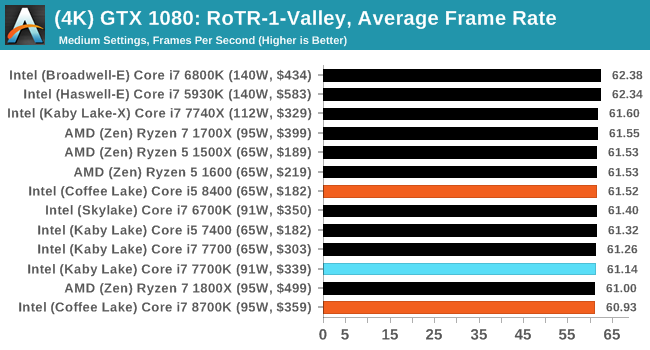
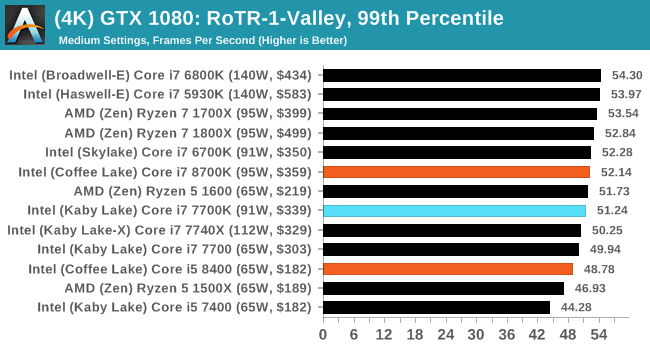
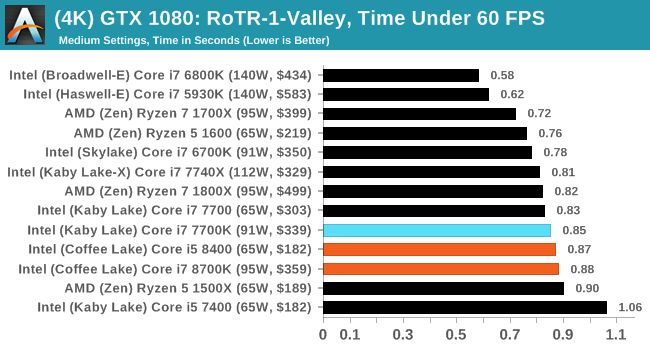
#2 Prophet’s Tomb
MSI GTX 1080 Gaming 8G Performance

1080p

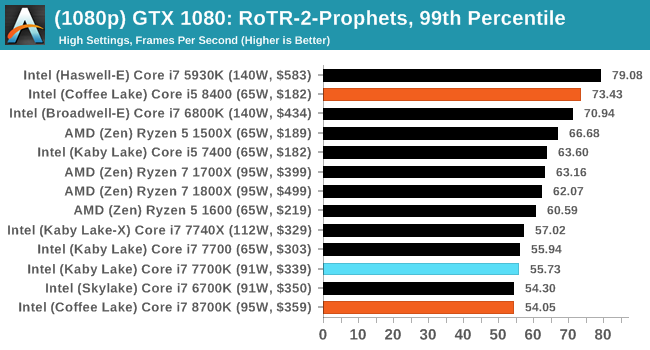

4K
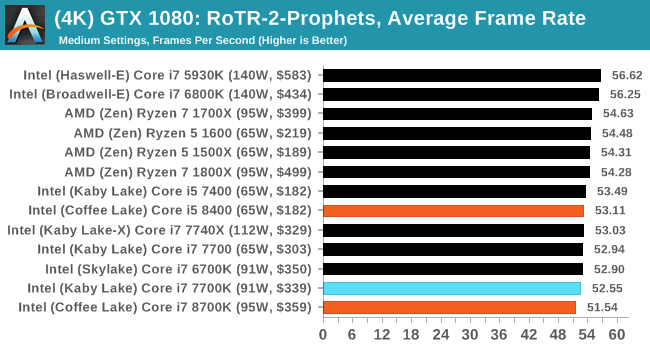
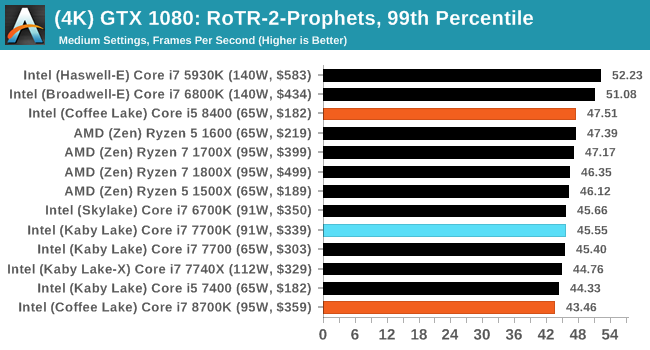
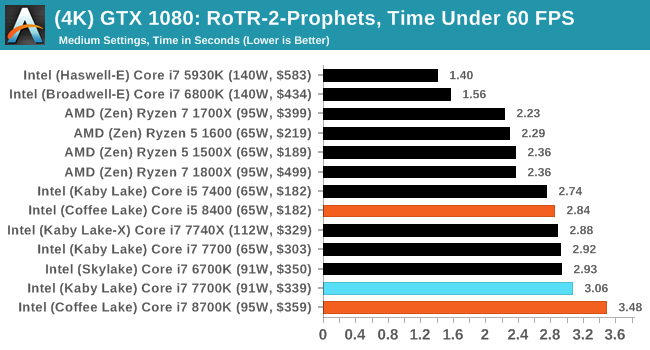
#3 Spine of the Mountain GeoThermal Valley
MSI GTX 1080 Gaming 8G Performance
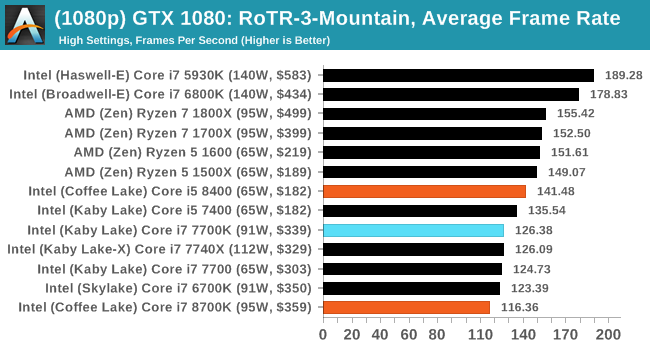
1080p

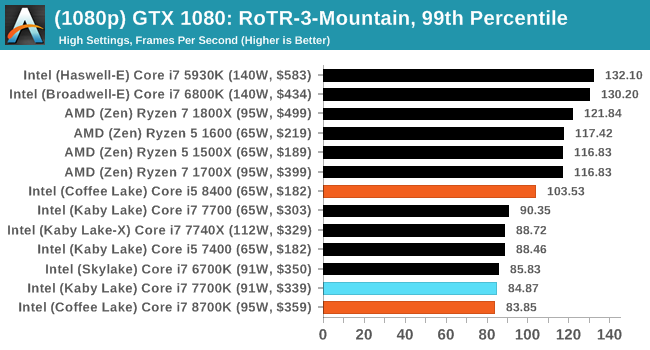
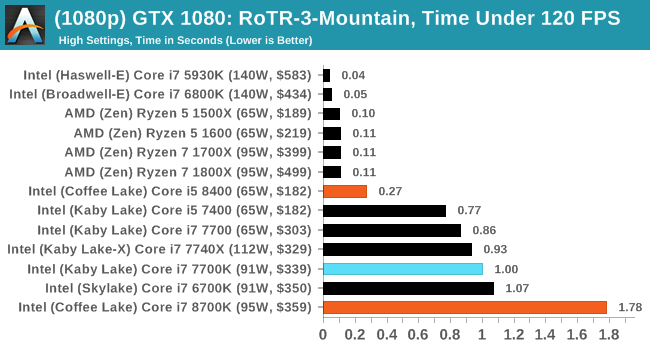
4K
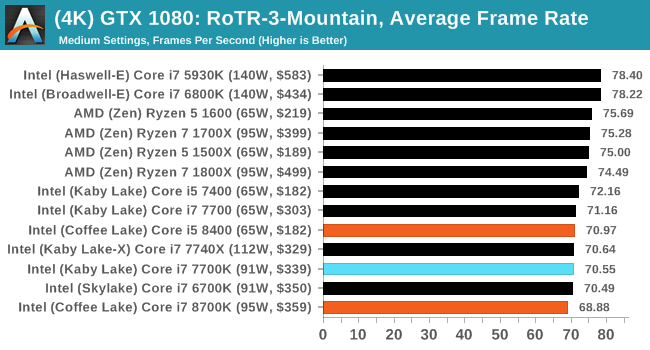
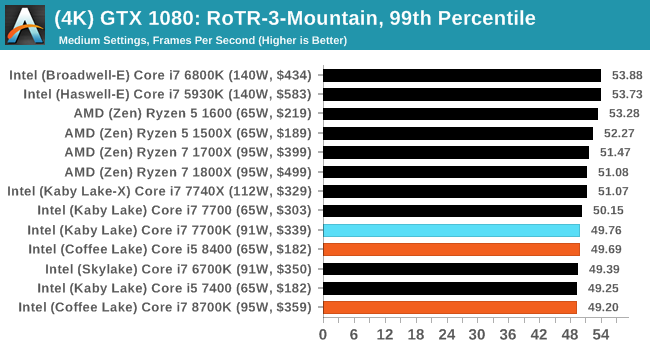
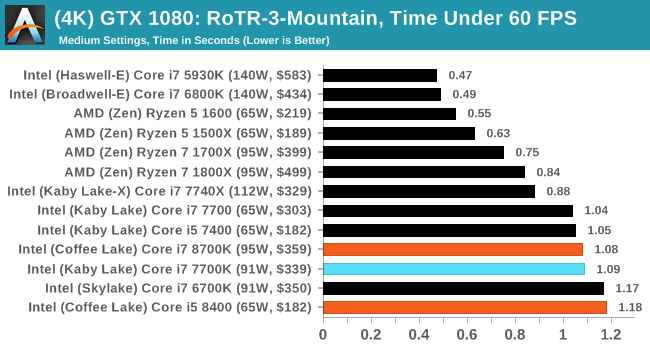
The 8700K did not seem to play nicely with RoTR. We'll go back and check this.


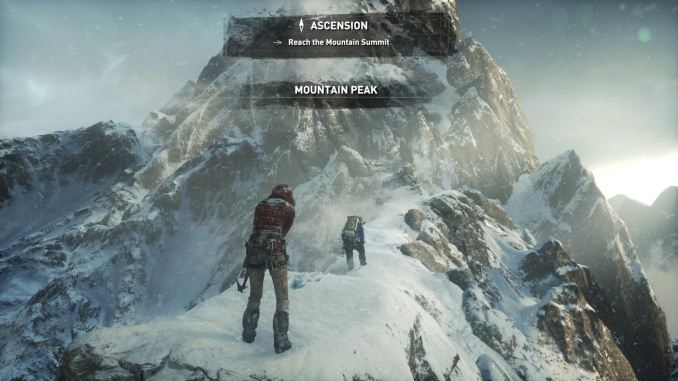












222 Comments
View All Comments
madwolfa - Thursday, October 5, 2017 - link
How in the world 8400 is so significantly faster than 7700K/8700K in all ROTR 1080p benchmarks?neo_1221 - Thursday, October 5, 2017 - link
Maybe resource contention on the hyper-threaded parts? It is odd, but I'm very impressed with that 8400. For most workloads it easily hangs out with the $300+ CPUs.risa2000 - Friday, October 6, 2017 - link
Not only RoTR but also in GTAV. I hope there is an explanation the guys at AT will figure out. If it was the congestion of the threads (as suggested above) then all Ryzen chips should be even worse, but they are not.mapesdhs - Friday, October 6, 2017 - link
According to Ian, RoTR has pure quad-core optimisations present in the engine.nsaklas - Thursday, October 5, 2017 - link
Good info Ian, thank you. Am I the only one who's terribly disappointed by this release?! I've been holding out for this moment to upgrade and what I can gather from the benchmarks is that this will have no noticeable improvement on performance for most applications vs. the last 2 gen's of CPUs....xyvyx2 - Friday, October 6, 2017 - link
yeah.. when I saw these numbers, I figured I'd go back to waiting for 10nm or Ryzen 2. But Techreport's comparison a) used a 1080ti, which I also have b) included my current cpu, the 4790k. The results were far more pronounced and closer to what I'd hoped...I'm mostly baffled by the i5-8400... if it's just 6 cores and it did so much better than the 8700k at a lower turbo clock, on those thread-crippled games, would the new i7 have done better with HT disabled? Would it run cooler with only 6 threads?
limitedaccess - Thursday, October 5, 2017 - link
I'm wondering if you can provide information on what the uncore speeds are for the various Coffeelake SKUs?limitedaccess - Thursday, October 5, 2017 - link
For example would the 8700 and 8700k possibly differ in uncore speed?Ian Cutress - Saturday, October 7, 2017 - link
Usually not, though Intel doesn't provide this information for all the chips in the stack for various (unfathomable) reasons. We've asked before.mapesdhs - Tuesday, October 10, 2017 - link
Is it possible to use cache snooping and other methods to work out uncore speeds?